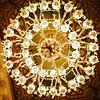Take a photo of a barcode or cover
In high school we used an excerpt from this book on my practice AP English exam - later I remembered some of the details from the story and exercised my Google Fu to find the title and author and I'm so glad I did. The Woman Warrior is beautifully written, sometimes baffling, and deeply revealing.
slow-paced
challenging
reflective
medium-paced
Amy Tan, you got a few tricks from Maxine, no? I thought this was brilliant and sly. The story about the sisters from China were especially sweet and sad. One who had moved years earlier to the states, and one who was newly relocated and lost to Western ways. One exacting, one passive and willing to accept her obscure fate. Isn't this theme universal?
Maxine Hong Kingston a écrit "La femme guerrière" en 1975, alors qu'elle avait 35 ans. Elle y dépeint son enfance, mais aussi largement la vie de sa mère, rassemblant des souvenirs et évoquant tour à tour l'immigration chinoise, le poids des traditions et des secrets familiaux ou encore la place des filles/femmes à cette époque.
Le premier chapitre démarre très fort et m'a laissée sous le choc en parlant de viol, de suicide et d'abandon familial. Les chapitres suivants abordent plusieurs moments de vie, mais tout se rejoint dans les thématiques (souvent douloureuses).
L'écriture est très forte, l'autrice prend un point de départ et sans que je m'en rende compte elle m'avait emmenée complètement ailleurs - notamment dans le chapitre qui donne son titre à l'ouvrage, et qui nous en apprend beaucoup sur les origines de "Mulan".
Une fois n'est pas coutume, je termine cet avis avec une citation que j'ai beaucoup aimée : "Je croyais que chaque maison devait avoir une femme ou une fille folle, chaque village son idiot. Qui le serait chez nous ? Probablement moi".
Le premier chapitre démarre très fort et m'a laissée sous le choc en parlant de viol, de suicide et d'abandon familial. Les chapitres suivants abordent plusieurs moments de vie, mais tout se rejoint dans les thématiques (souvent douloureuses).
L'écriture est très forte, l'autrice prend un point de départ et sans que je m'en rende compte elle m'avait emmenée complètement ailleurs - notamment dans le chapitre qui donne son titre à l'ouvrage, et qui nous en apprend beaucoup sur les origines de "Mulan".
Une fois n'est pas coutume, je termine cet avis avec une citation que j'ai beaucoup aimée : "Je croyais que chaque maison devait avoir une femme ou une fille folle, chaque village son idiot. Qui le serait chez nous ? Probablement moi".
I loved this book I read for my Multi-Ethnic Lit class. The language is beautiful and poetic, supplying the imagery and feeling of growing up Chinese-American.
This book should have a trigger warning attached. These things are not discussed in my review, but make an appearance in the book. TW: Suicide, Mental Illness, Bullying, Abuse, and use of the R-Slur.
This book has left me with complex feelings, and it is very difficult for me to decide how to rate it. The book is divided into five short stories. I would highly recommend the first four, but I do not want people to read the last story. The stories are all complex, and the past and present are woven together. This can make it difficult to follow what is going on, so be warned.
The best story is “White Tigers” which helped bring the story of Fa Mu Lan to western culture. It is a fantastic story of a true “Woman Warrior.”
I would have rated this book much higher had it not been for the last story, “A Song for a Barbarian Reed Pipe.” In this story, Hong Kingston uses harmful language and stereotypes to make fun of people with disabilities. I felt deeply uncomfortable while reading this story. I do understand that this was written in the 70s and that it is a product of its time. However, these stereotypes should not be perpetuated, and thus I really wouldn’t recommend anyone pick up this book unless you only plan to read the first few stories.
This book has left me with complex feelings, and it is very difficult for me to decide how to rate it. The book is divided into five short stories. I would highly recommend the first four, but I do not want people to read the last story. The stories are all complex, and the past and present are woven together. This can make it difficult to follow what is going on, so be warned.
The best story is “White Tigers” which helped bring the story of Fa Mu Lan to western culture. It is a fantastic story of a true “Woman Warrior.”
I would have rated this book much higher had it not been for the last story, “A Song for a Barbarian Reed Pipe.” In this story, Hong Kingston uses harmful language and stereotypes to make fun of people with disabilities. I felt deeply uncomfortable while reading this story. I do understand that this was written in the 70s and that it is a product of its time. However, these stereotypes should not be perpetuated, and thus I really wouldn’t recommend anyone pick up this book unless you only plan to read the first few stories.
Really conflicted about this one. It’s been on my TBR list since 2003, when I read the book’s opening essay, No Name Woman, in my freshman lit class in college. This is The Woman Warrior’s strongest essay, dealing with themes of family, legacy, feminism, motherhood, and immigrant families in a really powerful, memorable way. Images from this essay stuck with me for 14 years, and they were just as moving today as they were then.
The remaining 4 essays/short stories aren’t as deftly crafted, and have more a sprawling feel, as if Kingston was trying to contain all of her life experiences in the 40 pages of a single essay. The result is that there are some truly poignant moments on the pages, but they’re so disjointed that they lose their impact.
I’m torn also by the criticisms Kingston received by her Chinese contemporaries—they panned this book as an inaccurate portrayal of China and Chinese immigrants, as one that fed stereotypes and American ideas of China rather than disrupted them.
The remaining 4 essays/short stories aren’t as deftly crafted, and have more a sprawling feel, as if Kingston was trying to contain all of her life experiences in the 40 pages of a single essay. The result is that there are some truly poignant moments on the pages, but they’re so disjointed that they lose their impact.
I’m torn also by the criticisms Kingston received by her Chinese contemporaries—they panned this book as an inaccurate portrayal of China and Chinese immigrants, as one that fed stereotypes and American ideas of China rather than disrupted them.







